Play. It’s so simple, yet so important. Play is vital for a child’s development. It’s through play that a child acquires knowledge and develops cognitive, social, physical and emotional areas of the brain.
Play is difficult for kids who have limited use of their hands
For some kids, especially those who have limited use of their hands, the opportunities for self-initiated play and exploration are scarce. This is particularly true for kids with cerebral palsy (CP), which is the most common motor disability in childhood. While there are a wide range of abilities and difficulties within the CP diagnosis, they often have difficulty grasping, releasing, and standing toys up, as well as pushing a button with their fingers.
This is how the idea for Play for All began. As an occupational therapist who works with patients who have CP, I started thinking of ways to help them play independently, by adapting toys and changing the play environment.
HOW TOYS CAN BE ADAPTED FOR KIDS WITH MOTOR DISABILITIES
Through trial and error, we have found four ways to adapt toys so that kids with motor disabilities can play independently:
1. PURCHASE OR MAKE SWITCH-ADAPTED TOYS
One solution is to buy or make switch-adapted toys. These toys have been modified so that the original switches are rerouted to a larger switch that is easily accessible and operated. They can be fun and motivating but are often expensive to purchase and challenging to adapt. Switch-adapted toys are also limited in the type of play; simple cause and effect with a limited number of effects.
2. FIND TOYS THAT DON’T REQUIRE A LOT OF FINE MOTOR SKILLS
Some toys are a great fit for kids with limited motor skills. For example, there are toy animals that only need a gentle pat on the head to respond to the child. Certain cars will roll back to the child when they push the car away. It can be challenging to find toys that do this without actually trying them out. Looking at a toy in a box at the store or online may not give enough information.
3. MODIFY COMMERCIALLY AVAILABLE TOYS TO MAKE THEM EASIER TO GRASP
By modifying already-existing toys, we can make them accessible for kids who have difficulty using their hands. Modifications can include adding grips or handles, stabilizing the toy, increasing the size of the target, and changing the way the toy is activated. This can be as simple as adding Velcro to a toy to keep it from sliding away, or as complex as drilling holes in a toy to change a pushing action to a pull.
4. CHANGE THE WAY EXISTING TOYS ARE PLAYED WITH
Pretend play is a great way for kids to use their imaginations without having to use a lot of fine motor skills. For example, knocking down blocks can get repetitive and boring, but pushing a truck to demolish a building (the stack of blocks) to make room for a new zoo adds another layer to the play. When we set up play for the child, we can set up the story line as well.
WHERE TO GO FOR HELP ADAPTING TOYS
The Perlman Center at Cincinnati Children’s provides assistive technology appointments for positioning equipment, augmentative and alternative communication, and now, adapted play. Kids between the ages of 2-12 who have cerebral palsy and difficulty using their hands (MACS level III, IV, or V) can be referred for adaptive play evaluation and treatment appointments.
At these adapted play sessions, an occupational therapist (currently me!) will evaluate what movements are available to kids when they use their hands, where their interests lie, and then find and modify toys and play routines to meet those needs. When possible, 2-3 appointments will be scheduled in a way that gives families enough time to select a few toys to modify at the follow-up appointment.
I love to help children who have the most challenging bodies participate in their world – especially through play! My ultimate vision is for families to be able to understand how to select toys and set up play for their child. One way to empower families to help their child play is by giving them up-to-date resources. I have set up a blog called Play for All to post pictures of new toys I find, share how they can be modified, and write scripts for pretend play that don’t require much coordination or movement.
To schedule evaluation and treatment for adapted play through the Perlman Center, please call 513-636-4601.

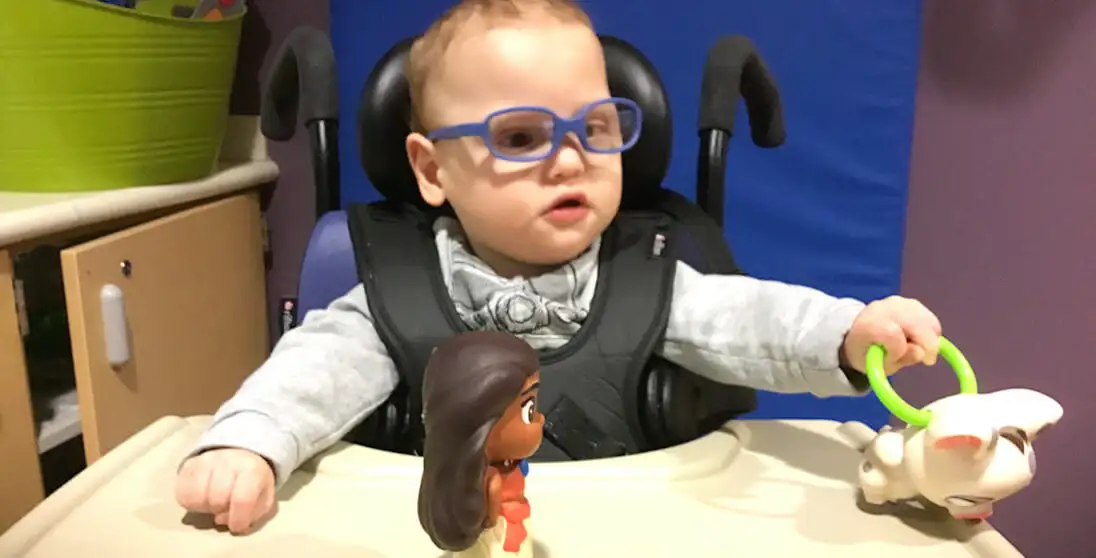
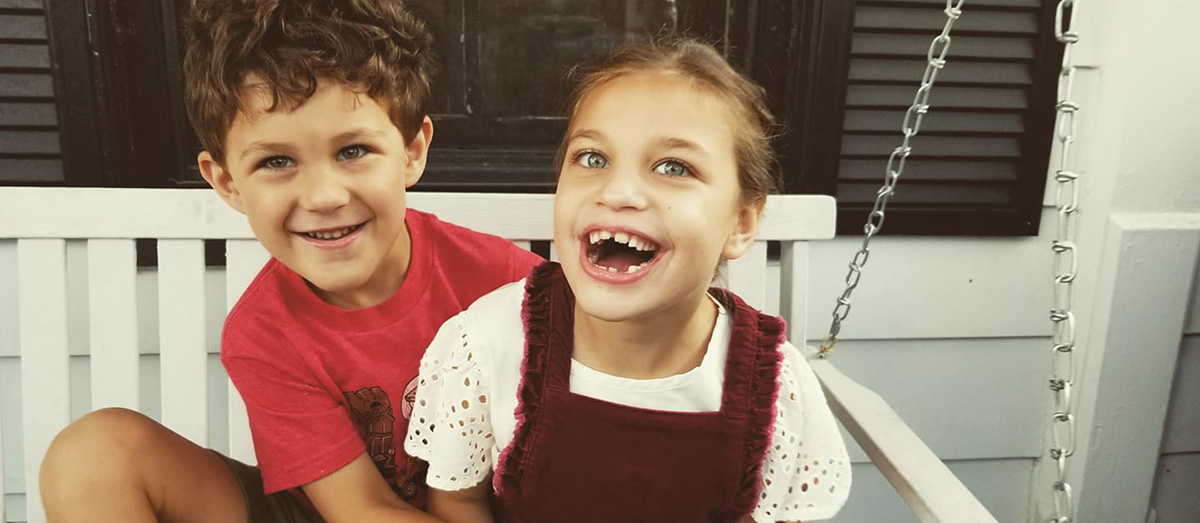
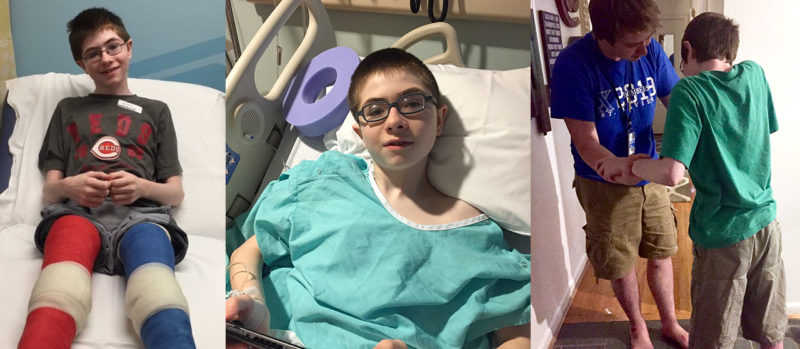
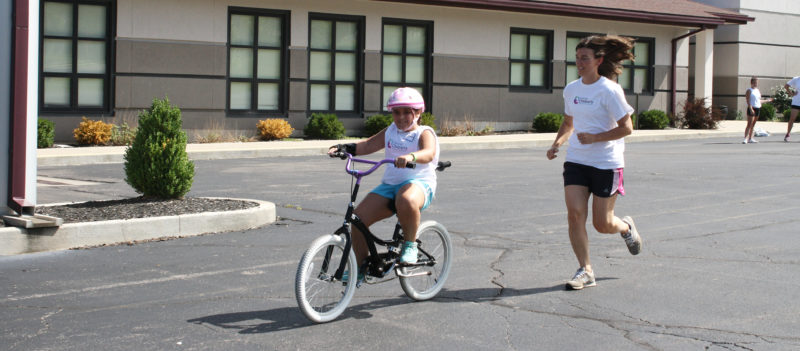
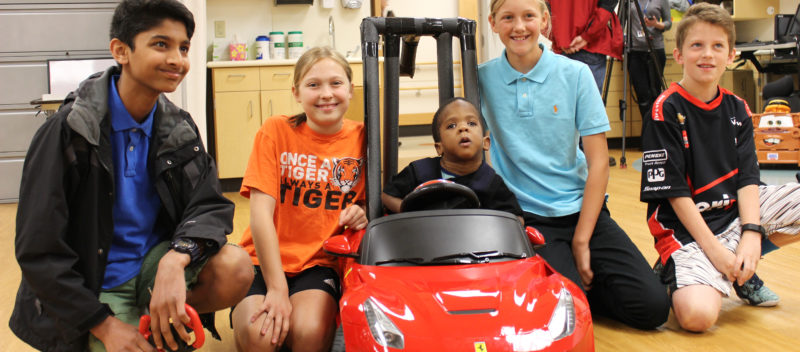

Hello bridget! Thank you for this heartwarming article. Adapting toys for kids with cerebral palsy is truly a game-changer. Your insights and tips are invaluable for parents and caregivers, making a positive impact on the lives of these wonderful children.